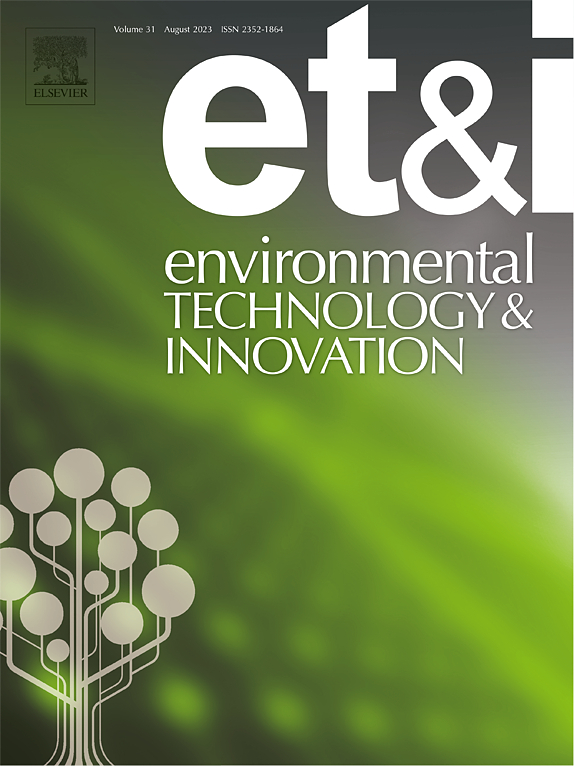Deciphering hypersaline tolerance mechanism of the pyridine-degrading strain Rhodococcus sp. PD10
IF 6.7
2区 环境科学与生态学
Q1 BIOTECHNOLOGY & APPLIED MICROBIOLOGY
引用次数: 0
Abstract
Pyridine is a common pollutant in the hypersaline wastewater from chemical and pharmaceutical industries, posing environmental and health risks. A Rhodococcus sp. strain capable of effectively degrading pyridine was isolated and enhanced to tolerate 10 % NaCl through adaptive laboratory evolution, resulting in Rhodococcus sp. PD10. Comparative genome analysis with qRT-PCR experimental verification suggested that the inhibition of cAMP degradation, accompanied with enhanced salt-tolerance of protein and increased energy production, likely contributed to strain PD10’s ability to survive in high salinity. Notably, an unusual metabolite, 7-methylguanine, was newly discovered to accumulate under abiotic conditions using untargeted metabolomics, and it was experimentally shown to favor cell growth in hypersaline environments, alongside compatible solutes like ectoine and the rare compound Nδ-acetylornithine. Kyoto Encyclopedia of Genes and Genomes (KEGG) pathway enrichment analysis further indicated that preserving cell membrane stability and fluidity is crucial for the survival of the strain under high salt stress. This study systematically uncovered the salt-tolerance mechanism of Rhodococcus sp. strain PD10, demonstrating its promising industrial applications.
求助全文
约1分钟内获得全文
求助全文
来源期刊

Environmental Technology & Innovation
Environmental Science-General Environmental Science
CiteScore
14.00
自引率
4.20%
发文量
435
审稿时长
74 days
期刊介绍:
Environmental Technology & Innovation adopts a challenge-oriented approach to solutions by integrating natural sciences to promote a sustainable future. The journal aims to foster the creation and development of innovative products, technologies, and ideas that enhance the environment, with impacts across soil, air, water, and food in rural and urban areas.
As a platform for disseminating scientific evidence for environmental protection and sustainable development, the journal emphasizes fundamental science, methodologies, tools, techniques, and policy considerations. It emphasizes the importance of science and technology in environmental benefits, including smarter, cleaner technologies for environmental protection, more efficient resource processing methods, and the evidence supporting their effectiveness.
 求助内容:
求助内容: 应助结果提醒方式:
应助结果提醒方式:


